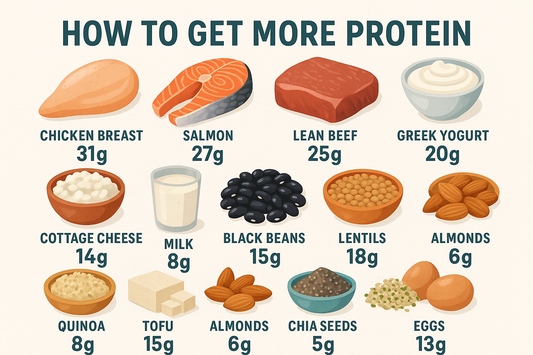Many individuals are familiar with the concept of physical activity, but understanding the different types of fitness is crucial for achieving overall health and well-being. The three main types of fitness include aerobic, muscle-strengthening, and bone-strengthening activities, each playing a vital role in maintaining a healthy lifestyle.
By delving into the specifics of these fitness categories, individuals can tailor their exercise routines to target different aspects of their physical health and fitness levels.
Aerobic Fitness
Understanding Aerobic Exercise
Little Types of Exercise
Aerobic exercise, also known as cardiovascular exercise, is crucial for maintaining a healthy heart and lungs. This type of activity involves moving large muscle groups in your arms and legs, causing your heart rate to increase and making you breathe harder. Over time, regular aerobic exercise strengthens your heart and lungs, improving their overall function.
The Impact of Aerobic Activity on Heart Health
An crucial aspect of aerobic fitness is its positive impact on heart health. Aerobic activities make your heart beat faster, improving its strength and efficiency. This type of exercise also helps lower blood pressure, reduce the risk of heart disease, and improve overall cardiovascular function.
Health experts recommend engaging in moderate- to vigorous-intensity aerobic activities to maximize the benefits for your heart. Even light-intensity activities, such as brisk walking or gardening, can contribute to better heart health when done regularly.

Examples of Aerobic Exercises
Any activity that gets your heart rate up and increases your breathing rate can be considered an aerobic exercise. Examples include walking, jogging, swimming, cycling, dancing, and playing sports like tennis or basketball. These activities not only benefit your heart but also improve overall fitness and endurance.
This variety of aerobic exercises allows you to choose activities that you enjoy and that fit your fitness level. Whether you prefer solo activities like running or group classes like aerobics, there are numerous options to keep your cardiovascular system strong and healthy.
How to Incorporate Aerobic Fitness into Your Routine
For optimal heart health, aim to include at least 150 minutes of moderate-intensity aerobic activity or 75 minutes of vigorous-intensity aerobic activity per week. You can break this time into shorter sessions throughout the day, making it easier to incorporate exercise into your daily routine. Start with activities you enjoy and gradually increase the intensity and duration for maximum cardiovascular benefits.
Muscular Strength and Endurance
The Role of Muscles in Fitness
On a fundamental level, muscles play a crucial role in overall fitness. Muscular strength and endurance are necessary components of physical health, allowing individuals to perform daily tasks with ease and engage in various physical activities. Building and maintaining muscle mass not only enhances physical performance but also contributes to a healthy metabolism and overall well-being.

Types of Muscle-Strengthening Activities
Muscle-strengthening activities are a vital aspect of any fitness regimen. These activities include exercises such as weight lifting, bodyweight exercises, resistance band workouts, and calisthenics. Knowing the different types of muscle-strengthening activities can help individuals create a well-rounded workout routine that targets various muscle groups and promotes overall strength and endurance.
| Pushups | Lifting weights |
| Squats | Resistance band workouts |
| Planks | Calisthenics |
Building a Muscle-Strengthening Routine
To effectively build muscle strength and endurance, individuals should incorporate a variety of muscle-strengthening activities into their workout routine. By diversifying exercises and targeting different muscle groups, individuals can achieve a balanced and comprehensive approach to muscle development. Understanding the importance of muscle-strengthening activities can lead to improved physical performance and overall fitness.
Safety Tips for Strength Training
Muscular strength training should always be approached with caution and proper technique to prevent injuries and ensure optimal results. Perceiving the importance of safety in strength training is paramount to long-term success and overall well-being. This includes using appropriate weights, maintaining proper form, and allowing for adequate rest between workouts.
- Avoid lifting weights that are too heavy
- Listen to your body and avoid overtraining
- Consult a fitness professional for guidance

Flexibility and Mobility
The Importance of Flexibility in Fitness
Not only does flexibility play a crucial role in overall fitness, but it also has numerous benefits for your body's functionality. Flexibility helps improve range of motion in your joints, which in turn enhances your performance in various physical activities and reduces the risk of injuries. Additionally, maintaining good flexibility can help alleviate muscle tension and improve posture.
Different Types of Stretching Techniques
| The Importance of Flexibility | Flexibility in Fitness |
| Range of Motion | Reducing Injury Risk |
| Muscle Tension Relief | Improving Posture |
| Enhanced Performance | |
| Joint Health |
The different types of stretching include static stretching, dynamic stretching, ballistic stretching, and proprioceptive neuromuscular facilitation (PNF) stretching. Each type targets different muscle groups and serves unique purposes in improving flexibility and mobility. By incorporating a variety of stretching techniques into your fitness routine, you can enhance your overall flexibility and reduce the risk of muscle tightness and injury. Knowing the right stretching techniques for your body can greatly impact your fitness journey and overall well-being.
Creating a Flexibility Training Program
Creating a structured flexibility training program is necessary for improving flexibility and mobility. By including a mix of stretching exercises that target different muscle groups, you can gradually increase your flexibility over time. For instance, you can focus on specific areas of the body that need more attention, such as the shoulders, hips, or hamstrings. Consistency is key when it comes to flexibility training, and integrating it into your regular workout routine can yield significant benefits in the long run.
Flexibility and Injury Prevention
Stretching plays a vital role in injury prevention by maintaining muscle elasticity and joint mobility. Flexibility training helps reduce the likelihood of muscle strains, sprains, and other injuries during physical activity. By incorporating stretching exercises before and after workouts, you can prepare your muscles for movement and enhance recovery post-exercise. Flexibility is a fundamental aspect of fitness that shouldn't be overlooked, as it can have a significant impact on your overall physical health and well-being.

Bone-Strengthening Activities
Understanding Bone Health and Exercise
Despite the common misconception that only high-impact activities are beneficial for bone health, any form of weight-bearing exercise can help improve bone density. By engaging in regular physical activity that puts stress on your bones, you can enhance their strength and reduce the risk of fractures or conditions like osteoporosis.
Activities for Enhancing Bone Density
Density Any activity that involves your feet, legs, or arms supporting your body's weight can contribute to bone-strengthening. Running, jumping rope, and resistance training are excellent examples of exercises that can enhance bone density and overall skeletal health.
A mix of high-impact and low-impact activities can further improve bone density. For example, activities like dancing or hiking, which involve dynamic movements and weight-bearing, can also be effective in enhancing bone strength.
Integrating Bone-Strengthening into Daily Life
Enhancing Integrating bone-strengthening exercises into your daily routine is important for maintaining optimal bone health as you age. Including simple activities such as stair climbing, gardening, or even bodyweight exercises like squats or lunges can make a significant difference in preserving bone density and overall bone health.
Daily By making bone-strengthening activities a regular part of your lifestyle, you can not only improve your bone health but also enhance your overall physical fitness and quality of life. Consistency is key in reaping the long-term benefits of exercise on bone strength and density.
Key Takeaways:
- Aerobic Activity: This type of activity benefits your heart and lungs the most, making them stronger over time.
- Muscle-Strengthening Activity: Improves the strength, power, and endurance of your muscles through exercises like pushups, lifting weights, and climbing stairs.
- Bone-Strengthening Activity: Involves activities where your weight-bearing muscles push against your bones, making them stronger. Examples include running, jumping rope, and lifting weights.
Balance Training
Benefits of Balance Exercises
The practice of balance exercises offers a range of benefits for individuals of all fitness levels. Enhancing balance can help improve stability and reduce the risk of falls, especially as we age. Additionally, balance training can contribute to better posture and coordination, leading to improved overall body awareness and control.
Balance Exercise Examples
For those looking to incorporate balance exercises into their fitness routine, there is a variety of activities to choose from. Simple exercises like standing on one leg or walking heel-to-toe can help strengthen core muscles and improve stability. More advanced options such as using a wobble board or practicing yoga poses can further challenge balance and coordination.
For instance, incorporating balance exercises into your workout regimen can provide a well-rounded fitness routine that addresses not only strength and cardiovascular health but also enhances coordination and stability. By combining balance training with aerobic and strength exercises, individuals can achieve a comprehensive approach to physical fitness that promotes overall well-being.
Incorporating Balance Training with Other Fitness Types
Training your balance can be seamlessly integrated with other types of fitness activities to create a holistic workout plan. Incorporating elements of balance training into aerobic exercises like dancing or swimming can help improve coordination and agility. Additionally, including balance exercises in muscle-strengthening routines can enhance overall performance and reduce the risk of injuries.
| Balance Training | Benefits |
| Improved stability and coordination | Reduced risk of falls |
| Better posture and body awareness | Enhanced core strength |
| Integrated with other fitness types | Comprehensive approach to overall fitness |
| Enhanced agility and performance | Reduced injury risk |
It is important to balance your fitness routine with a variety of exercises to ensure overall physical well-being. Though focusing on specific areas such as balance is beneficial, incorporating a mix of aerobic, muscle-strengthening, and bone-strengthening activities is vital for a comprehensive and effective workout regimen.
Combining Fitness Types for Overall Well-being
Unlike focusing solely on one type of fitness, combining different types of physical activity can greatly benefit your overall well-being. By incorporating aerobic, muscle-strengthening, and bone-strengthening exercises, as well as balance and flexibility activities, you can achieve a more comprehensive and balanced approach to fitness. Knowing how to integrate these different types of activities into your routine is key to maximizing the benefits for your health and wellness.
Creating a Balanced Exercise Plan
Balanced exercise plans involve a variety of activities that target different aspects of fitness. By including aerobic activities to strengthen your heart and lungs, muscle-strengthening exercises to improve muscle strength, and bone-strengthening activities to enhance bone health, you can create a well-rounded workout routine. Balance and flexibility activities should also be added to improve stability and range of motion.
Strategies for Combining Different Types of Fitness
To effectively combine different types of fitness, it is important to vary your workouts and include a mix of activities in your routine. Assume that each type of exercise brings unique benefits to your overall fitness level. By alternating between aerobic, strength training, and flexibility exercises, you can ensure that you are targeting all aspects of physical fitness and reaping the rewards of a well-rounded workout regimen.
Adapting Fitness Routines to Life’s Changes
On your fitness journey, it's imperative to adapt your routines to life's changes. Different circumstances may require modifications to your exercise plan, but it's important to stay committed to your overall well-being. Whether it's adjusting the intensity of your workouts, finding new ways to stay active, or seeking professional guidance, being flexible with your fitness routine can help you maintain a healthy and active lifestyle.
Final Words
Drawing together the information presented, the three main types of fitness are aerobic, muscle strengthening, and bone strengthening. Each type of fitness activity plays a key role in improving overall health and well-being. Aerobic activities, such as walking, swimming, and dancing, benefit the heart and lungs, while muscle-strengthening activities, like weightlifting and push-ups, improve muscle strength and endurance. Bone-strengthening activities, such as running and jumping rope, help maintain strong and healthy bones. It is crucial to incorporate a variety of fitness types into your routine to experience the full range of benefits for your physical health.
FAQ
Q: What are the three main types of physical activity?
A: The three main types of physical activity are aerobic, muscle strengthening, and bone strengthening. Balance and flexibility activities are also beneficial for overall health.
Q: Why is aerobic activity important for the heart and lungs?
A: Aerobic activity, also known as endurance activity, benefits the heart and lungs the most by making them stronger and more efficient over time. This type of activity involves moving large muscles and increasing heart rate and breathing.
Q: What are examples of aerobic, muscle strengthening, and bone strengthening activities?
A: Examples of aerobic activities include walking, running, swimming, and dancing. Muscle strengthening activities include pushups, weight lifting, and climbing stairs. Bone strengthening activities include running, jumping rope, and lifting weights.













